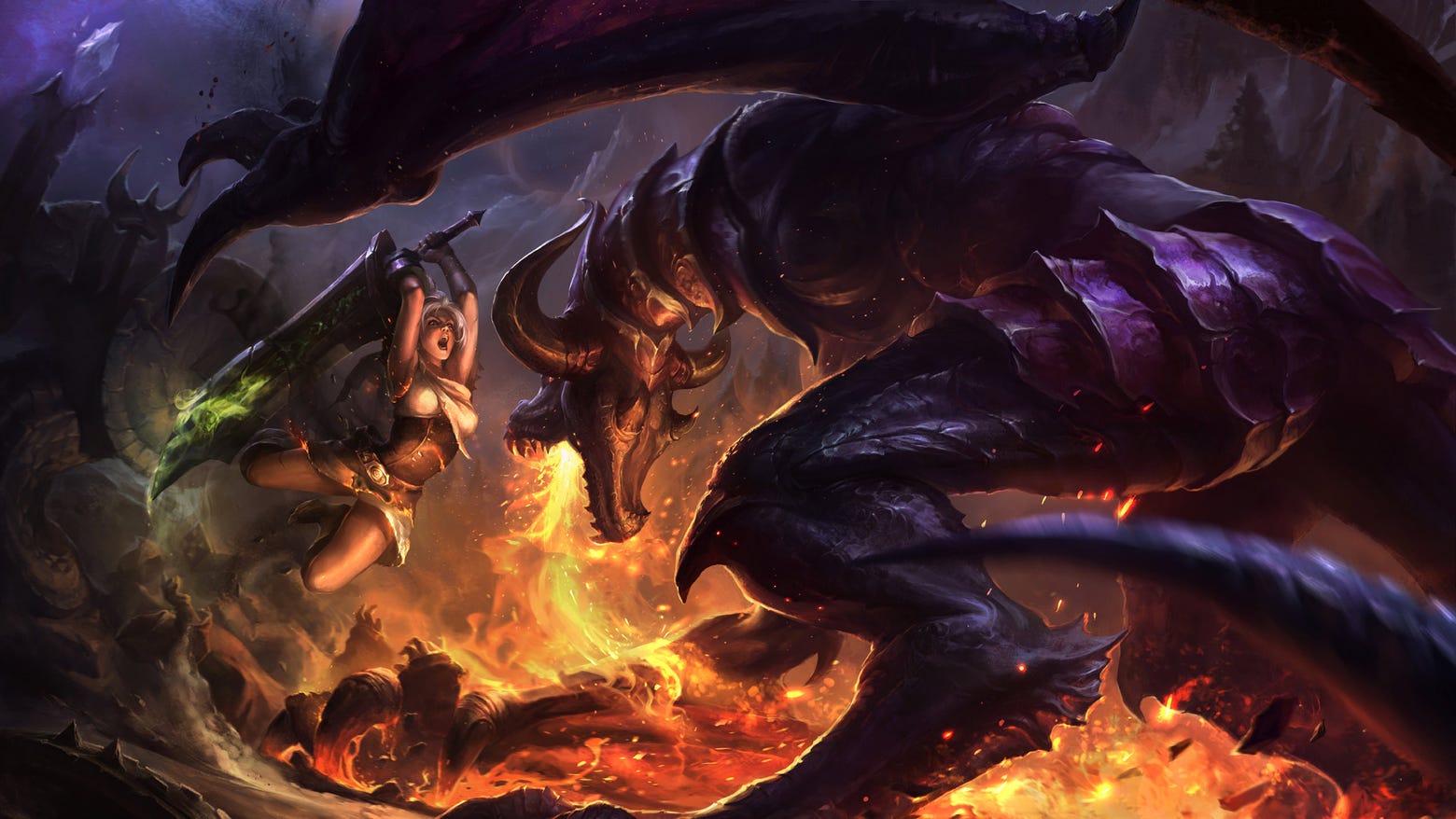With the 2022 seasons of both ranked and Clash underway, we wanted to take some time to talk about the state of competitive play as we see it today.
Goals:
As with every season, we like to continually review our goals and evaluate how we’re tracking towards them. Specifically, for competitive play, we focus heavily on:
- Competitive Integrity: Players have an even playing field in their competitive matches
- Progression Opportunities: Players have meaningful goals to reach for
- Team or Organized Play: Players are aware of, and can participate in, opportunities to play with others of similar intent and skill
We evaluate these goals by reviewing player sentiment and other metrics such as match availability (time to queue), quality (are matches competitive and fair), and whether or not matches are compelling to participate in (are they satisfying, do they deliver on player intent, and do they offer a sense of progression). Ultimately, we want to bring everyone a competitive game filled with opportunities that match their individual intent and expectations.
To do this, we try to create experiences in the form of different game modes and mechanics that match your play intent and expectations. For example, Solo/Duo Queue is all about creating a competitive environment to prove your mastery of League at the individual level, while Clash is there to test your mettle as a team. Both experiences have their strengths and weaknesses, but are generally going in the direction we’ve been targeting. Let’s dig in.
What’s Happening Now?
We have some clear issues with our overall matchmaking and queue health that we want to address early in the season. These include the following updates:
- Revival MMR: We’ve found that our current systems aren’t as accurate as we’d hoped in maintaining the expected MMR of players that have taken a break from the game, be it a few weeks or a year plus. As such, we’re implementing a more dynamic approach to Revival MMR and MMR decay across all queues that should provide those players with fairer matches in their first 5-10 games back as they rediscover their muscle memory and game knowledge.
- Boosting Evaluation: We addressed some boosting issues late last year, but we’re still not happy with the current state of the game here. Looking at Ranked Flex queue in particular, we saw issues with low MMR and high MMR combined premades that abused MMR discrepancy and account sharing to rapidly boost accounts to where they didn’t belong. We addressed this in the short term by restricting the top tier players to only playing with other accounts at similar ranks. We acknowledge there’s a lot more we should do here, and we plan on working directly with our anti-cheat team to identify solutions that will hopefully improve the integrity of Ranked Flex queue.
- Challenges Launch: We’re getting close to the launch of Challenges. Its been a complex project with its own unique challenges (pun definitely intended), but we are happy with how expansive we’ve been able to make it and are excited to roll it out to players globally. We’re currently planning for Challenges to go live in patch 12.9!
That said, the launch of Challenges is just the beginning. We plan to continually invest in leveling up Challenges so it lives up to our vision as a robust progression experience for all League players.
Ranked Queue Health and the “Premade Problem”
From a high level viewpoint, Solo/Duo queue is currently in one of the healthiest states we’ve ever seen. Autofill is at its lowest ever global rate hovering between 0.5% and 3% of player games. Queue times are at a 2 year low in many large regions and hovering firm in our small regions. Lastly, MMR accuracy is strong, where 99% of players are playing with those within a maximum of 2 divisions of their rank with a steady win-prediction accuracy to back it up.
That said, we do see issues with Solo/Duo Queue that consistently point to our accommodation of premade duos–this directly adds quality and population volatility into the matchmaking mix. It causes games with duos of imbalanced MMR to impact our autofill/secondary role rates (sometimes double the chances), queue times (~10 second increase for players per game on average), and most importantly-game quality metrics (upwards of a 10% win-rate spread in both directions).
On the flip side, we’ve started to see a significant decline in the health of Ranked Flex queue where queue times (~7 min on average for 3 person parties) and match quality (2-4 division discrepancies between teams) have diverged significantly. The ironic thing here is that the total population in Ranked Flex remains healthy, but the premade distribution and make-up of that population has shifted to a point where it’s difficult to make matches at a quality bar we’d like.
The root cause of this is the high number of 3 person parties that want to play together, with not enough 1s and 2s to fill them out as these solo/duo players can just opt to play a different game mode. This can cause those matchmaking envelopes to expand to a point where queue times and quality expectations cannot reconcile.
Additionally, the difficulties making quality matches for our most popular premade size amplify the impact of disruptive actors in the queue like boosters (who queue as duos with their boostee) and account sellers (who queue as solo) such that the queue itself overall becomes unhealthy, especially at the top level.
To put it simply, our inability to match premades in a compatible way is a detriment to the system that doesn’t have a path to get back to being healthy without significant change.
In the past when we saw this, we attempted to resolve these issues by merging both queues together dynamically. With learnings from Dynamic Queue (which we won’t be revisiting) and a deeper understanding of player intent now, we know that’s not going to work. So what do we do?
What we’re investigating:
- Solo Only Mode: In order to match player intent and provide the healthiest competitive individual queue possible, we’re re-evaluating our take on Solo/Duo and exploring a world where solo players play in solo queue and premades play in Ranked Flex or Organized 5’s modes.
On paper, the system health and quality indicators look really good. For example in Solo Only Queue:
- We would expect an even further decrease in autofill and secondary rates
- Queue times could decrease by up to ~5% for 99.9% of players
- Winrate advantages due to team disparities would vanish completely
- Boosting would be eradicated
- We would expect between-team and within-team MMR for 99% of players to be within one division’s rank of each other during peak hours
In addition, we would likely see the following for our Ranked Flex queue:
- An increase in queue population
- Drastic improvements to match quality
- Significant decrease in queue times for parties of 3
- Increase in overall match quality and competitiveness
- Increased opportunity for group/organized play
All that said, we absolutely want to be confident that our duo population, which is fairly significant in size, can still find a competitive environment before making any large changes to the current systems. This means re-investing in Ranked Flex queue integrity with our anti-cheat team and finding a natural way for Solo play to connect with Ranked Flex/Clash.
We’re approaching this topic seriously and with care, and will provide an update further on in the year on if it’s an area we can realistically move forward with.
Additional areas of focus include:
- Re-evaluating our queue portfolio: We believe a healthy competitive system is more than just ranked modes. It also includes the other game modes like normals and ARAM. This means that in order to keep the game healthy, it’s also important to continually re-visit your other game modes on a regular basis.
We get to ask ourselves “what do changes that make our non-ranked queues as healthy as possible look like?”
Opportunities like:
- What does blind pick look like if we guarantee you can get the Champion you want to play and not have to fight for it in Champ Select?
- How do the compelling and strategic aspects of Clash expand to something that’s readily available and accessible for all players, yet still engaging for those that like to play with a premade 5s team?
- How can we better connect esports with the general public’s play aspirations? How can efforts like Champions Queue be integrated into the core game for the larger player base in the future?
- Further Expanding Progression: With the launch of Challenges coming soon, we’re hoping to take stock of the health of our overall progression systems. The intent here is to evaluate the impact of how a broader progression system affects the health of the game. Our expectation is that players who feel that they have meaningful progression options outside of ranked won’t be forced to take part in competitive queues when they otherwise don’t want to. If we find that play patterns for players include more variety for the majority of players, then we can start to focus more on perfecting exciting new features for specific subsets of players that creates a stronger and more unified set of game systems long term.
What you might expect to see are progression options that span into rotating game modes, exciting annual events, and potentially even other core games like Teamfight Tactics.
We’re excited to take a deeper look into our League systems and queues to provide the healthiest long-term version of League that is both competitive and engaging.
As always, see you on the Rift.
